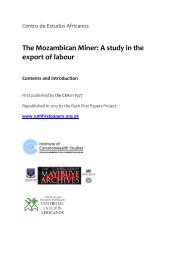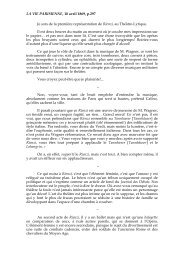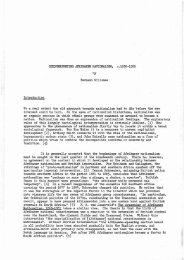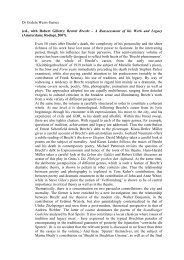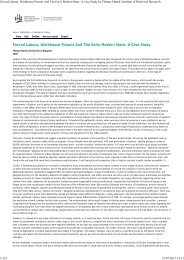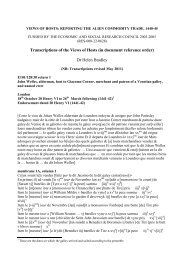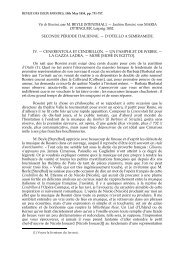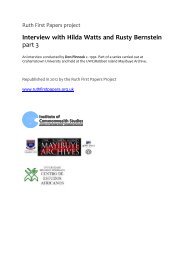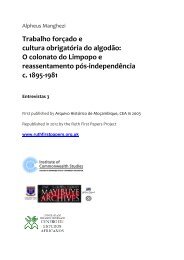Roraima: Brazil's northernmost frontier by John Hemming - SAS-Space
Roraima: Brazil's northernmost frontier by John Hemming - SAS-Space
Roraima: Brazil's northernmost frontier by John Hemming - SAS-Space
You also want an ePaper? Increase the reach of your titles
YUMPU automatically turns print PDFs into web optimized ePapers that Google loves.
Makuxi as Maiongong and to Venezuelans as Maquiritare) were great<br />
navigators who moved between the upper Orinoco and the Uraricoera. They<br />
were also sadly diminished as a result of measles, malaria and work in rubber<br />
tapping in Venezuela. TheTaurepang (known to the whites as Arecuna, and<br />
in Venezuela and Guyana as Pemon) were a Carib-speaking tribe closely<br />
related to the Makuxi, who lived on the Surumu and the slopes of <strong>Roraima</strong>,<br />
and westwards to the tip of Maraca island. Koch-Grunberg said that the<br />
Taurepang had once been almost as numerous as the Makuxi, but were<br />
reduced to 1,000 or 1,500 in his day, from the inevitable smallpox and other<br />
diseases.<br />
The Makuxi were an exception to this pattern of demographic decline.<br />
Robert Schomburgk in 1839 estimated that there were three thousand<br />
Makuxi, of whom roughly half lived in Brazil and half in British Guiana. This<br />
tribe's numbers were similar in the first decade of the twentieth century,<br />
according to Koch-Grunberg and the Reverend James Williams.<br />
Then the Makuxi were also devastated <strong>by</strong> disease. There was a particularly<br />
bad attack of measles in 1910 that killed thousands of Indians. This was followed<br />
in 1911-12 <strong>by</strong> an unusually severe drought. Koch-Grunberg wrote that<br />
many plains Indians died of starvation, since they had none of the plentiful<br />
game of forest Indians and depended on plantations. A Belgian Benedictine<br />
called Dom Adalbert said that 'it did not rain for eight months, and all the<br />
plants were anihilated. The savannas looked as though they had been burned<br />
and a large part of the cattle died.' 51<br />
Worse was to follow. By November 1912, this missionary reported that 'a<br />
great epidemic of fever has been raging in this region. The Indians died en<br />
masse. The population of the area that comes under our mission has been<br />
decimated, if not anihilated.' 52 The symptoms of this epidemic were inflammation<br />
of the spleen and liver, anaemia and a form of dropsy. The situation<br />
had evidently not improved <strong>by</strong> 1919, when it was reported in a company prospectus<br />
that 'bilious fevers' had first struck Rio Branco in 1909, before which<br />
malaria had been unknown there. The disease arrived from the north, and<br />
recurred annually. It struck both whites and Indians, and thousands died<br />
from it. The prospectus warned that if the authorities did not act quickly, Rio<br />
Branco would be a desert.<br />
Devastation from these diseases and drought reduced the Makuxi to 1,700<br />
people, in both Brazil and British Guiana, <strong>by</strong> 1943. In the following year, Iris<br />
Myers calculated that there was a total of 1,800 Makuxi and wrote about the<br />
concern at their diminution. She blamed malaria, but also noted that 'the<br />
infantile mortality rate is high. The writer estimates it as exceeding 50% in<br />
the Canuku villages. ' 53 An alarming number of young adults died from malaria,<br />
and 'respiratory diseases, chiefly bronco-pneumonia, also take a large toll'. 54 In<br />
the early 1940s she also saw a serious outbreak of alastum smallpox. The pilot<br />
Art Williams told her that he had flown into remote villages, particularly in<br />
the lower Rio Branco, and found the entire population dead.



